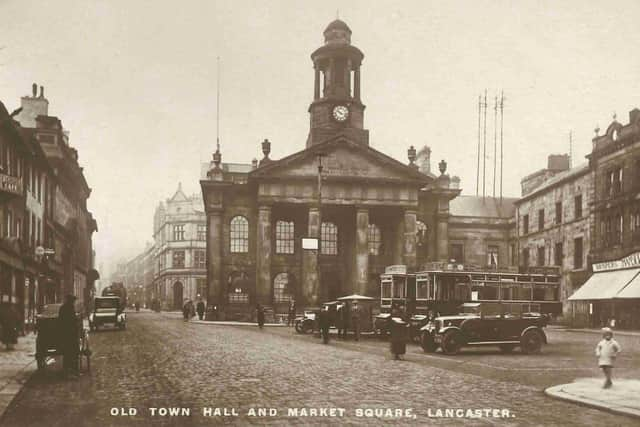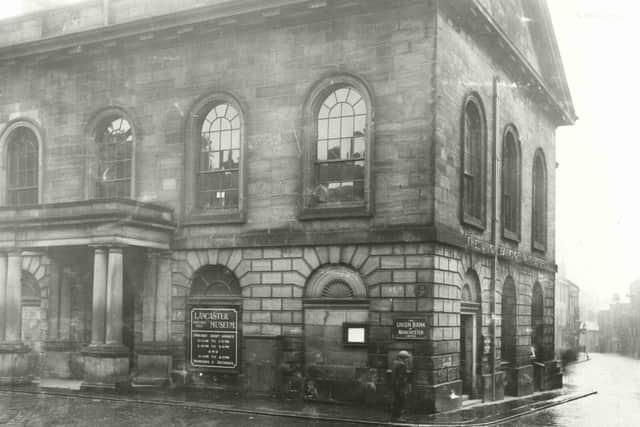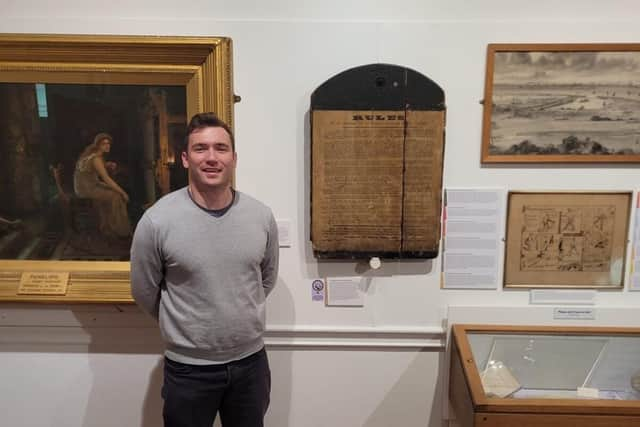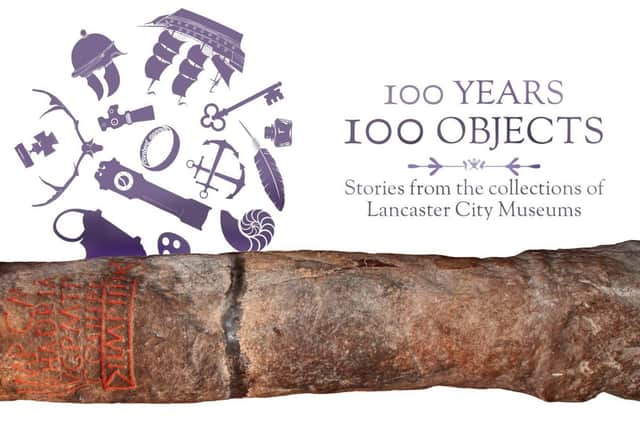Looking back at history of Lancaster Museum as it prepares for centenary celebrations
and live on Freeview channel 276
The museum was officially opened in 1923 by the Mayor, Alderman James Oglethorpe and 100 years to the day, his grandson, Philip Oglethorpe, is due to attend a special event to mark the milestone.
Of course, the Lancaster Guardian was present to report on the opening and in an article printed on November 10, 1923, it detailed some of the exhibits including Mr R Stanton’s ‘remarkable collection of tokens, coins and medals, which are unique as far as Lancaster is concerned;’ ‘a Roman plate, quite intact, found when the excavations of the Centenary Church were made’; and ‘a drum left behind at Arkholme by the supporters of Bonnie Prince Charlie.’
Advertisement
Hide AdAdvertisement
Hide Ad“Local memories also will be stirred by a portion of high explosive shell, picked up after the White Lund explosion in October, 1917,” the article continued.


Although any 100th birthday is cause for celebration, Lancaster was way behind some of its Northern neighbours when it came to providing a civic museum as Kendal’s
opened in 1797 and The Harris Museum in Preston opened in 1893.
However, the building in which the City Museum is housed dates back to 1793 and was formerly the Town Hall, built at a cost of £2,000.
Advertisement
Hide AdAdvertisement
Hide AdWhen the new Town Hall opened in Dalton Square, alternative uses for its predecessor had to be found.


Eventually, a bank moved into the ground floor and ‘an interesting collection of relics’ built up since the 1850s, transferred from Lancaster Mechanics Institute – now The Storey – to the first floor.
The new museum would open daily from 11am-1pm and 3-5pm as well as 6-8pm on Wednesdays and Saturdays.
Being just five years after World War One had ended, Lancaster Corporation also intended to employ a local disabled ex-serviceman as a museum attendant, earning 25
shillings.


Advertisement
Hide AdAdvertisement
Hide AdExhibits were originally displayed in the former council chamber which, the Lancaster Guardian pointed out, ‘had not been seen by many ratepayers.’
However, all that was to change as a 1927 report by the British Archaeological Association proves: “As some evidence of the popularity of the museum, it may be noted that
during the four years in which it has been open, over 130,000 visitors have been recorded.”
In 2022/3, 51,685 people visited the City Museum to see just a fraction of around 70,000 objects that the service as a whole holds, some of them, such as a Roman milestone,


were among the original exhibits.
Advertisement
Hide AdAdvertisement
Hide AdLancaster City Council’s Museums Service now also includes the Maritime Museum, Cottage Museum and the King’s Own Royal Regiment Museum.
The Regiment Museum moved into part of the ground floor of the City Museum in 1929 and later relocated upstairs.
During World War Two, some of the museum’s collections were stored privately on the Haverbreaks estate and show cases were taken to the Ashton Memorial in 1942.
Just as the museum had been originally founded upon personal collections, it continues to depend on objects being donated by the public to tell the district’s story from
Advertisement
Hide AdAdvertisement
Hide Adprehistory to the modern day. Last year, it took in 100 new objects.


The museum has been described as a communal memory chest and, as such, seeks to reflect the changing diversity of Lancaster and the surrounding district and to tell the
stories of those communities whose voices are seldom heard.
As part of the centenary celebrations and in a nod to how much technology has changed since 1923, 100 podcasts have been produced featuring local people, specialists and
the museums team talking about their favourite objects from the collection.
Advertisement
Hide AdAdvertisement
Hide AdAnd complementing the podcasts is a new exhibition – 100 Years, 100 Objects: Your Favourite Objects From The Collections of Lancaster City Museums.
Among those on display are fossils, a Williamson’s factory rule board, a Morecambe cricket cartoon from 1908, a child’s ration book from 1918 and to bring the collection up-to-
date, photographs taken during the Covid 19 pandemic.
Since the 21st Century began, there have been several twists in the museum’s fortunes and just over 20 years ago, the Friends of Lancaster City Museum was founded to
campaign against closure proposals.
The Friends continue to support the museum by fundraising for acquisitions which have recently included a painting of Lancaster Market and a poesy ring from the 1700s.
Advertisement
Hide AdAdvertisement
Hide AdIt also arranges events, monthly talks and will be holding its annual meeting on November 25.
Recently, the strain on Lancaster City Council’s resources has led to a reduction in the museum’s opening hours.
Plans are also underway to convert one of the exhibition galleries into a tourist information point and shop.
Another development which could never have been imagined back in 1923, is the use of social media to promote the museum and its collections, a useful way for more people,
Advertisement
Hide AdAdvertisement
Hide Adand especially those who are housebound, to enjoy what’s on offer.
To enable visually impaired people to access some of the museum’s exhibits, it is working with Lancaster University’s School of Engineering and Galloways Society for the
Blind to 3D print relief images of some of the paintings.
And in other efforts to increase its reach, in the past year, the museum has welcomed community groups including refugees from the Ukraine, Iran and Syria and worked with
Lancaster Black History Group on a Slavery Family Trees exhibition.
Lancaster City Museum has had to change with the times over the last 100 years but will always be the place to go to reflect on the area’s past.